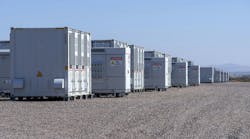Despite its name, the Turlock Irrigation District (TID) expends more effort these days on the flow of electricity than water. As one of only four California irrigation districts that also provides electric retail energy directly to homes, farms and businesses, TID has been the primary electrical utility to its customer base since 1923. Today the district has 98,000 electricity customers in a 662-square-mile service area covering portions of Stanislaus, Merced, Tuolomne and Mariposa counties.
In addition to electric power, TID is a big generator of data. Production information, intra-utility buy/sell transactions, customer accounts, billing and accounting, and much more, are all by-products of daily operations. According to Ashish Raje, senior software engineer for the Turlock Irrigation District, processing such a high volume of information requires a great deal of scheduling—a task which, until recently, also required a great deal of IT staff work.
“When the provider of our existing job scheduler began abandoning support two years ago, we started looking for a replacement. Some were frightfully expensive,” Raje stated. The company then found ActiveBatch, from Advanced Systems Concepts, a cross-platform Workload Automation and Job Scheduling Software solution. ActiveBatch’s central dashboard, Integrated Jobs Library comprises “production-ready” job steps, and event-based architecture. As Raje put it, “ActiveBatch has a very fine-grained means of managing the environment. Everything is an object—permissions, triggers, dependencies, and alerts can all be reused. That’s a big plus from a management perspective because it virtually eliminates any scripts we have to write to complete a workflow.”
Installing ActiveBatch wasn’t difficult at all, Raje stated. “Two servers host our database environment in an active cluster. When one is down, the other kicks in right away. All of our scheduled jobs are clustered in ActiveBatch, so two machines can handle the jobs on an ongoing basis to maintain high availability,” he said, adding that a non-cluster option is available for ActiveBatch as well.
Compared to the previous job scheduler, the IT team has found the flexibility of ActiveBatch to be one of its best attributes. “We’re not limited to setting up jobs just one way. We have a lot of latitude to pick and choose,” Raje commented. “ActiveBatch also lets us set up a job for visibility. Sure, we could write a ‘big old script’ but it would be hard for someone else to understand. We can split jobs into a number of steps—that makes it much easier to understand workflows and job steps without having to dive into code.”
Raje said that timely data is critical to parties both inside and outside the organization. “One of our most essential data processing tasks is scheduled reporting. Our service area constitutes a Control Area for the Western Electricity Coordinating Council, and we must keep the WECC constantly updated,” Raje noted. “Every bit of power that goes in or out has to be balanced. Any time there is a change to our rolling five-day schedule—generation or consumption, buying power or selling it—we are obligated to inform the WECC.”
The public importance of such information means data has to be fresh and accurate. Typically, every electric power buy/sell trade has to be furnished to the WECC within the first five minutes. That requirement, along with more routine processing of customer bills and payments and other business tasks, means IT job scheduling is “a most definitely a mission-critical function,” said Raje.
Today, ActiveBatch operates at the core of Turlock Irrigation District’s IT infrastructure. “We depend on ActiveBatch heavily,” Raje said. “Not having it would be a significant problem.” Soon the application will play an even larger role as the utility finishes rolling out its smart meters across its customer base. The on-premises innovation, which can both send and receive data, provides real-time information about electrical consumption. They also can immediately report outages, track usage by day part and much more. As smart meter data comes into the TID system, ActiveBatch will manage these near-real-time processing tasks.
“We anticipate virtually everything to move over to ActiveBatch eventually—even some of the legacy ‘big old scripts’ we have in place,” Raje stated. “Around here our IT people place a premium on ease of use and reliability. ActiveBatch helps us a lot.”

